How Zalando Reimagined Shopping to Provide Value-Based Experiences
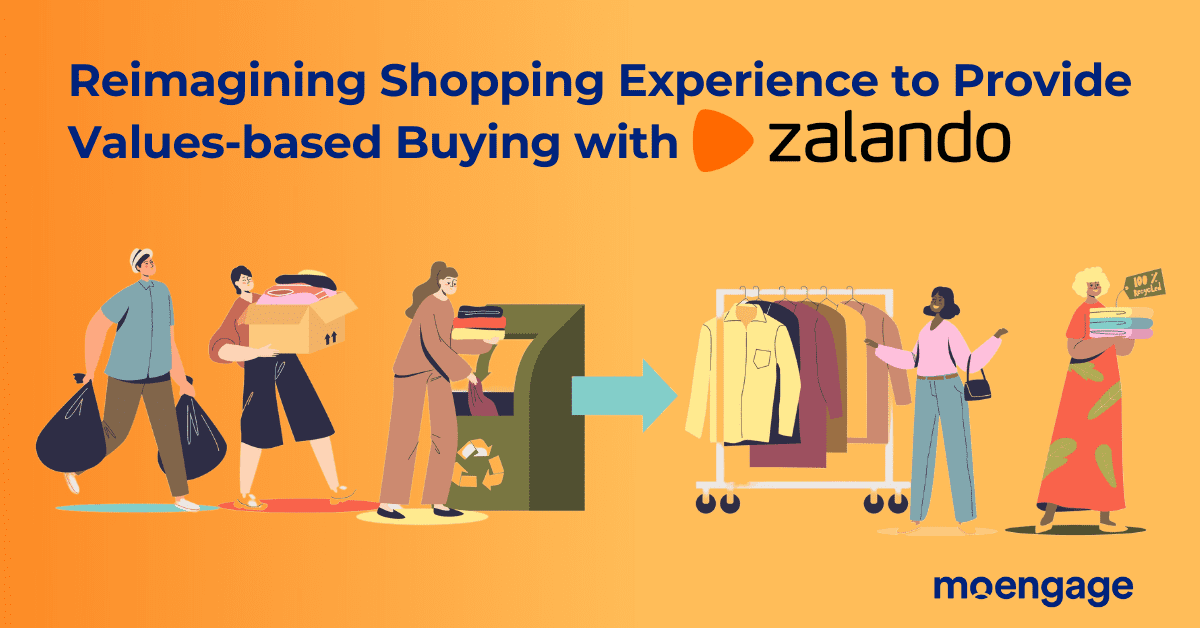
Reading Time: 13 minutes
Selling direct to customers (D2C) has been growing over the past few years, and the growth has been pretty significant in the UK and Europe. Just last year, emarketer states the growth peaked at 62.5% in these regions. This growth can be accounted for by the rise and success of marketplaces and homegrown sites such as OnBuy and Zalando. Another reason is the mobile-first shopping experience offered by D2C brands. Not to forget, the ongoing pandemic is adding more fuel to the whole “selling directly to customers”.
So how are D2C brands able to achieve this steady growth amidst the growing retailers moving to online platforms? D2C brands are niche brands that create high-quality products, offer a more personalized experience, and connect with customers at every stage of a purchase journey. With today’s customers being cognizant of the various social and environmental issues, their buying patterns get dependant on these values. Hence for them, values go beyond prices and expect similar beliefs when shopping online. Observing the trends, most of these brands offer a value-based D2C experience. And if a brand is able to promise and provide such shopping experiences, then the customer switches loyalty to the brand.
Introducing Zalando
One such example is Zalando who’s ready to provide value-based buying and elevating the whole buying experience so that customers come back to them. Zalando, German-based multinational fashion e-commerce, focuses on creating a shopping community with social beliefs and values. The brand has been working towards creating a more viable brand by providing sustainable fashion options, focusing on being carbon neutral, and opt-in options for value-based purchases.
This vision of Zalando’s to create value-based buying has helped the brand grow to new heights. Its Andriod app shows more than 10 million downloads and iOS more than 2 million downloads. The brand’s app is observing around 22% growth with an overall DAUs of 2 million.
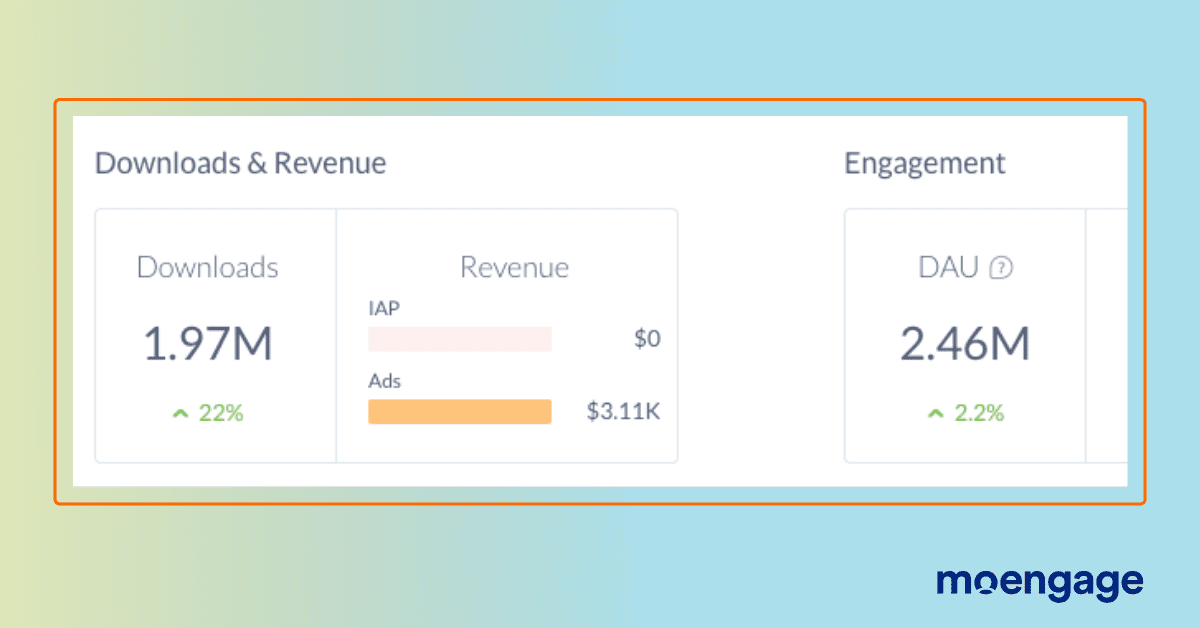
Let’s dig deep to understand what it means to offer value-based buying options and how is Zalando able to create these experiences.
What do you mean by value-based buying and sustainable fashion?
A recent consumer culture report where consumers from different geographies and varied age groups were asked if it is important for a brand to align with their values. Do you know 83% of them said yes it matters to them what values they support? Also, 65% of them boycotted brands they previously purchased from because of their negative or no stance on the values they believed in.
It is fair to say that today’s customers are literal followers of social and environmental issues. They are demanding the bar of transparency and social responsibility to be raised even for brands they purchase from. That’s where your value-based buying comes in.
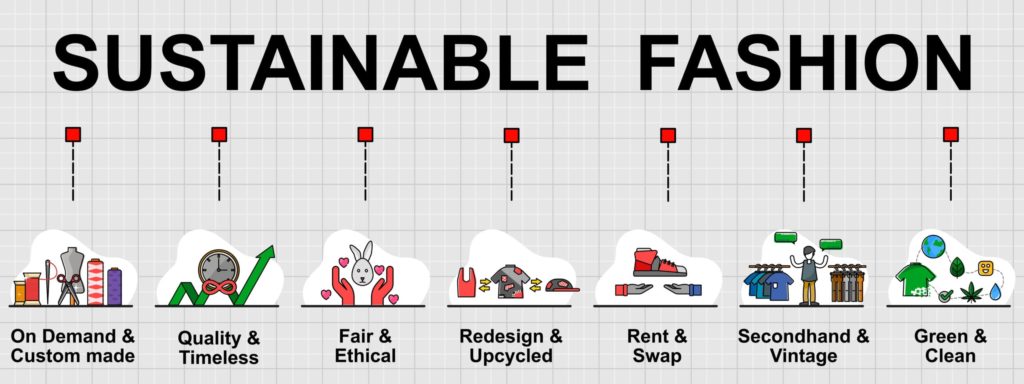
A customer who purchases from a brand based on the social beliefs and values the brand showcases then it is called value-based buying. Your customers today are empowered and ready to invest money only where its heart is. They want to show off their beliefs and ideologies and are ready to spend money on such products and be loyal to such brands.
Brands especially with environmental values such as zero-waste packaging, reduce carbon emission, and sustainable fashion attracts such empowered customers. Sustainable fashion is primarily one of the known paths to be taken by most fashion brands. Sustainable fashion means offering organic material like cotton, environment-friendly materials (jute, hemp, etc), recyclable materials, and eco-friendly processing.
Now that we know what value-based buying and sustainable fashion means let’s see how this changed Zalando’s vision.
Zalando’s vision to create an environment-friendly shopping experience
After a decade of selling, Zalando realized the powerful role a brand play in creating a much more sustainable environment. In 2018, Zalando as a fashion brand decided to go environment-friendly for its customers across Europe and the UK. Zalando’s vision for the past 4-5 years has been to create a shopping experience that not only offers quality products but also provides customers the values they believe in.
Sustainable Options
The brand spoke to its customers 1:1 to understand the values they believed in and how as a brand they can do their bit in helping them achieve these values. By 2019, they found out that eco-friendly packaging and minimizing plastic usage were two of the top three rated sustainable drivers to boost the likelihood of customers recommending Zalando. So the brand started reimagining its packaging to minimize wastage and use recyclable materials.
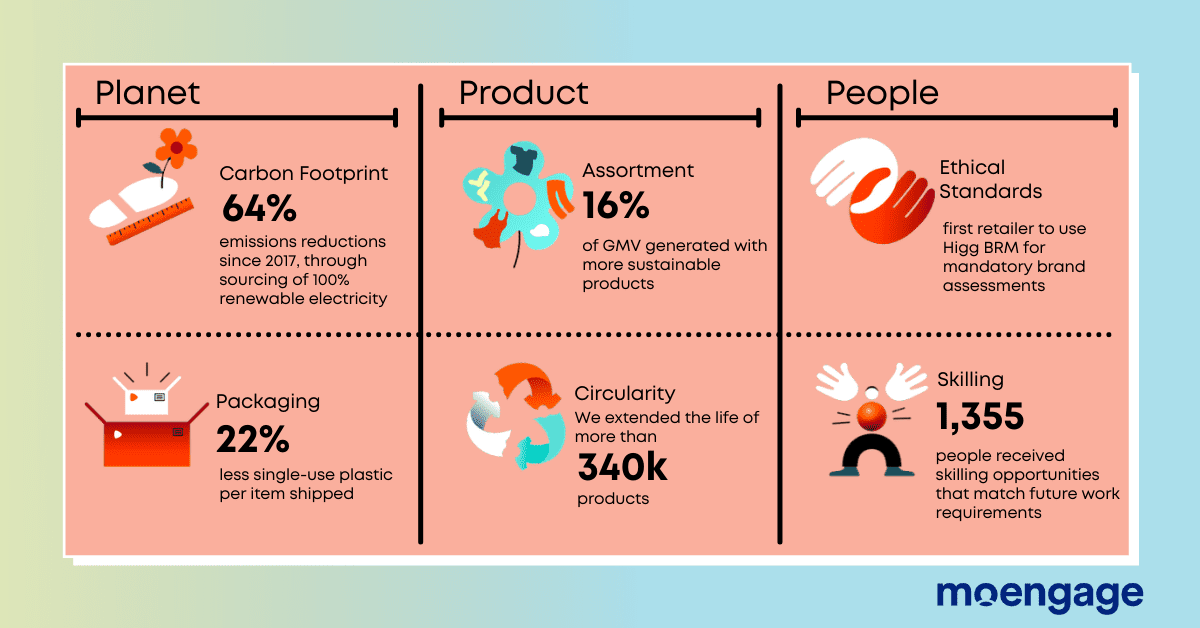
Later they launched do.MORE, their sustainable strategy that focuses on three key areas—planet, products, and people. Zalando continues to move towards becoming a sustainable fashion platform by getting certified for Global Organic Textile Standard, Global Recycle Standard, and many more. Over the last few years, Zalando has been working tirelessly to keep upping its sustainability game. So far its been able to improve its sales growth by 46% with a jump of 55% of its gross merchandise value (GMV). It is also targeting to generate 25% of its GMV using more sustainable products by 2023.
The brand launched a sustainability flagship across its fashion stores (physical and online stores). Zalando is reducing its carbon footprint on a yearly basis and is committed to reducing greenhouse gas emissions by 80% by 2025 against its 2017 base percent. It is using renewable energy like solar panels for its offices and fulfillment centers.
Zalando reimagines the shopping experience using value-based buying
According to Zalando, 1 out of 4 of their customers considers sustainability when making a purchase decision. That’s one of the many reasons, the brand launched its own suitability fashion flagship called Zign. It has also extended the life of more than 340,000 products using Zalando Zircle, the brand’s resale flagship.
The brand didn’t stop there but took it up a notch higher by launching value-based buying recently. According to the brand, not every consumer understands what sustainability means in the fashion context. So the brand started a values-based browsing experience that will allow customers to browse products based on the values they care are about. These values include water conversion, reusable material, animal welfare, emission reduction, worker wellbeing, and typical extending life of fashion using organic, recyclable materials.
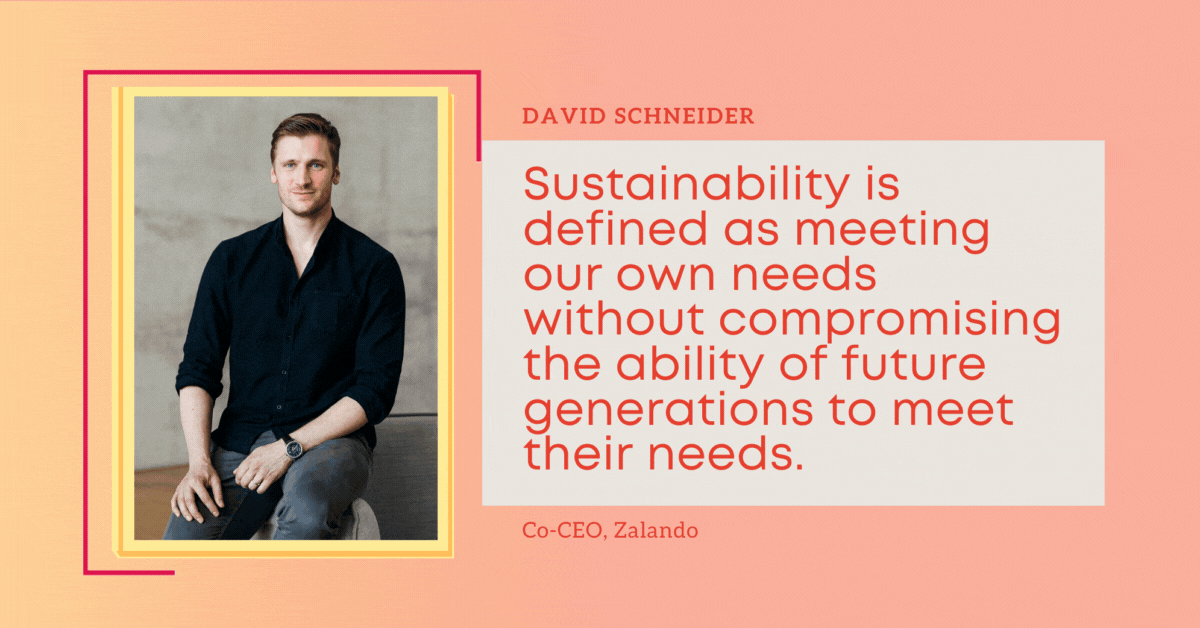
To ensure that it closes the sustainability attitude vs behavior gap, Zalando ran surveys and interviews to get customer insights and recommendations. The brand also took the current COVID-19 situation into consideration to understand changing customer behavior patterns.
1. Attitude vs behavior gap
The team at Zalando surveyed around 2,500 customers across the UK, Germany, Sweden, France, and Italy to understand the attitude vs behavior gap. The surveyed customers ranged from 22 to 35 years of age. The aim of this survey was to understand why customers exhibit a positive attitude towards valued-based buying but fail to execute on this attitude with responsible buying behavior.
Based on the survey, some 35% of customers choose a discount deal over a sustainable item because of value for money. However, 58% of them say that the long-lasting quality of the products is also equally important. The brand observed that the gap is wider than it seems because around 60% of customers mentioned second-hand, sustainable disposal, and repair products are important. But then again only 23% of the respondents actually acted on it.
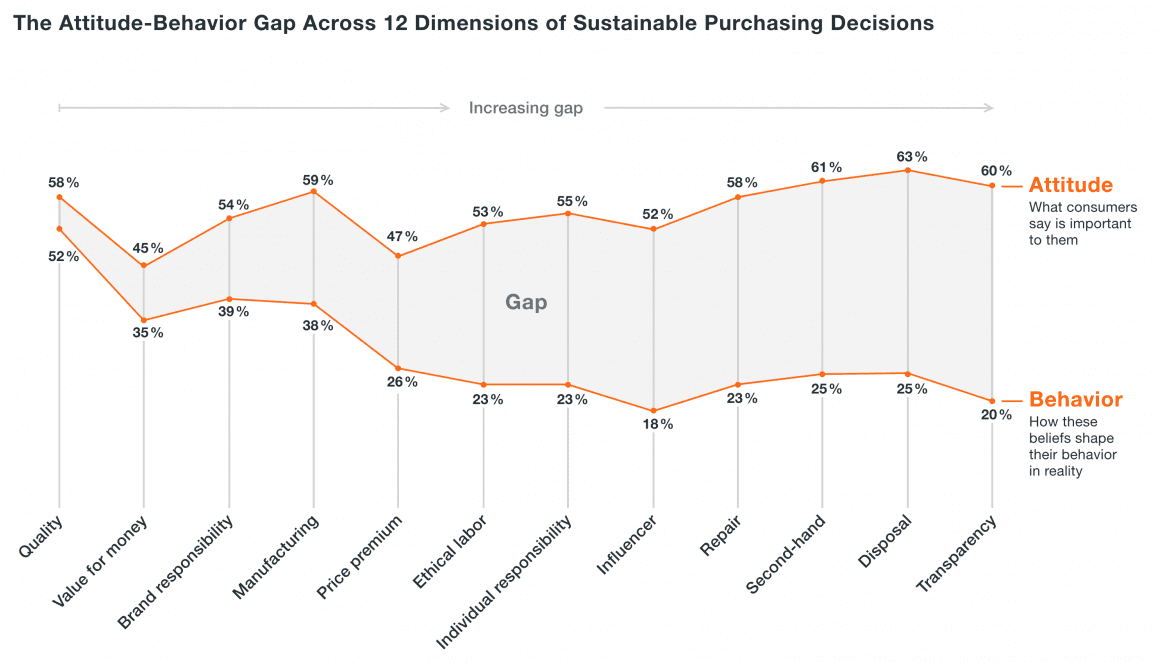
Using this survey, Zalando was able to understand that the customers do care about sustainability but they struggle to translate their attitude into actual behavior. One of the main reasons for this is they feel the brands need to assist them to navigate through such value-based buying. More than 50% of respondents feel “it is important for brands, online platforms and vendors to take the pressure off them by taking steps toward sustainability.”
2. Changing consumer behavior due to coronavirus
Since the beginning of this pandemic, the ways in which customers engage with and consume products have undergone radical changes. The buying shift has been more imminent in Europe and the UK region when compared to the other regions. Especially with this region’s customers getting more aware of the fragility of human and earth’s ecosystems. Hence almost two-thirds of consumers feel it is crucial to limit climate change now more than ever.
Zalando observed this change with more than 50% of its customers actively buying sustainable products between January and December 2020. Even with the price increase due to the virus outbreak, around 70% of Zalando’s customers invested in higher-quality products.
Overall, Zalando thinks the change is here and decided to release its values-based buying experience. Now its customers can easily browse through the sustainable assortment consisting of over 80,000 articles from more than 500 brands. The new browsing experience should help customers map the values they believe in and display products accordingly.
Strategies to learn from Zalando when changing the shopping experience
Zalando observed a whopping growth of 65% in downloads with a 35% increase in DAUs and a 17% increase in MAUs during the peak pandemic period. And this year clearly started off on a high note as well with a 20% jump in downloads and a 1.2% in DAUs. Zalando’s rating is 4.5 stars and its ranking has moved to Top 5 for Germany, Spain, Belgium, Poland, Austria, Norway. and Denmark.
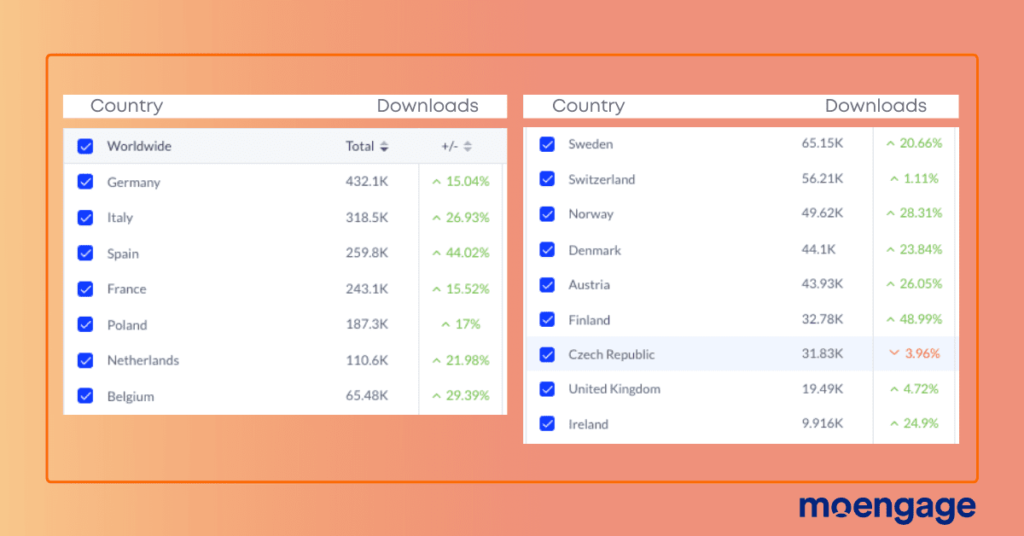
It doesn’t stop here. Zalando’s Zircle app, its resale flagship been observing quite a steady rise in downloads and DAUs since the beginning of this year’s quarter. Clearly, Zalando’s new ways of shopping are a hit in the UK and Europe region.
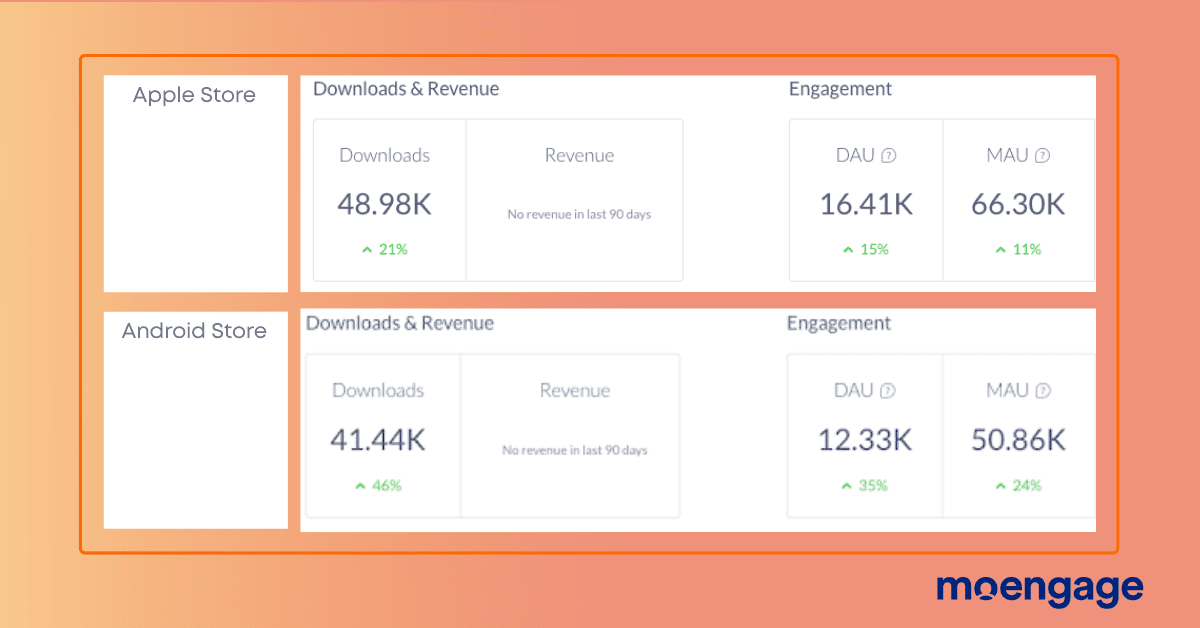
Zalando achieved this success and growth through a goal-driven strategy, insights-led engagement, and reinstating fashion trends for the betterment of the planet. The brand ensured its customers were at the center of these changes by keeping them in context and planning changes based on their actions and recommendations. There are many lessons and takeaways we can learn from this success story. But the crux of the story is the strategies implemented that any D2C, retail, or e-commerce can utilize if they’re planning to revamp their shopping experience.
1. Analyze current shopping trends
Customer shopping behavior is ever-changing especially in times like this unpredictable crisis. Even before the crisis hit the world, the customer shopping pattern was subject to change due to factors like the advent of technology and innumerable options. Though there are some trends predicted in advance and typically continue to linger for almost five years. Knowing and analyzing these trends even before taking a step towards changing experiences will come in handy.
Do thorough market research, such as know your industry’s growth, factors driving the change, and predicted trends. Also, learn the pulse of the customers and which trend are they leaning towards. Based on your findings understand what trend(s) do you want to apply to your shopping experience and then understand if your customers are in for it too.
Learnings from Zalando:Zalando knew that most of the customers are leaning towards buying from brands who are doing their bit in preserving the planet and its resources. Especially in the region, they operate from was big on conserving limited resources, organic materials, and such values. As a fashion brand, even Zalando wanted to give back to the planet and save it as much as possible. Here the trend worked for them as both the ongoing trend and their own brand beliefs were moving towards similar ideas. |
2. Run surveys to understand customer shopping outlook
You know the trend you want to invest in and learned where the customers are moving, so the next step is to rope in the customers themselves. Without getting the complete perspective from customers on their shopping attitude and patterns, there’s no point in changing the whole experience. It’s crucial to know what the customer wants and to what extend he/she wants you to go when changing the shopping experience. So how do you do it? You run 1:1 surveys and interviews with your customers.
Start an exclusive change survey for your existing and favorable customers urging them to help you understand how you can improve the experience. Be transparent and inform the customer why you’re doing this survey and how you’re planning to utilize the outcome. Your end customer needs to be equally on board with your idea of change because if they are not then all then hard work will be unnecessary. The survey questions need to be in-depth with proper shopping dimensions, themes, and behavioral aspects.
Learnings from Zalando:Zalando knew what it wants and how to achieve it that’s why they conducted an in-depth attitude-behavior analysis. Later they released the reports with their finding as well to ensure the transparency was maintained. They conducted their survey across their operational geographies, divided the customer base equally between genders and ages, and create 12 different behavior dimensions. Eventually, they divided their findings into seven different themes and showed what they are changing based on the findings. |
3. Create a phase-wise deployment
Customers coming on your website/app every day to shop can’t take in a huge shift in experience overnight. You need to give them some time to warm up to the changes. The best way to normalize such high-level changes is to inform, educate, and engage in a phase-wise manner. If you consider the first two strategies then half of your job is done. The next thing will be to divide your change into different phases and deploy it accordingly.
You need to also ensure that your operations, warehouse, and manufacturing facility are equally equipped to drive this change. Your shopping experience can be anything—from adding more categories to introducing a completely new set of products/brands; or it can be changing your brand promise to become more environment-friendly. Whatever you choose, you need to revamp the shopping and engagement experience holistically and this will require a change at a process, data, user, and channel levels.
Learnings from Zalando:When Zalando decided to become a more environment-friendly brand, they didn’t directly introduce a values-based buying experience. They did it in a phase-wise manner by first reimaging their packaging, driving sustainable strategy, launching fashion and resale flagship, and eventually introducing a new shopping experience across channels. |
4. Execute insights-led engagement campaigns
It is important to engage your customers every step of the way especially when you’re bringing in high-level changes. Understand your customers using insights collected and then plan a proper pre- and post-engagement. If you start with your initial survey then half of your pre-engagement is covered. Using the survey insights, you can continue to engage customers with information on the upcoming changes and different phases their shopping experience might go through. Your pre-engagement can include sneak peeks and mini reveals to titillate customers’ curiosity.
Your post-engagement should focus on making their experience easier by offering information every step of the way. Again utilize the insights gained during the survey and pre-engagement state. Now focus on onboarding customers for new experiences using quick ‘update blocks’ appearing on the screen. You can use the ‘what’s new’ series or pop-badges across the website/app to help navigate easily. You can pre-set these engagement campaigns to be triggered based on actions and events created by the customer.
Learnings from Zalando:Zalando has been very transparent with its customers by ensuring the right info and engagement were passed onto them. It kept its customer in the loop using surveys, emails, and eventually releasing reports. The brand utilized the survey findings to ensure that the engagement is insightful and relevant. They gave customers something to look forward and create a more seamless shopping experience. |
Mapping insight-led engagement in the world of connected retail experience using MoEngage
Your ever-evolving customers want a unified and consistent experience throughout their journey no matter what channel, device, or touchpoint they choose. So stitching all your online and offline touchpoints together is the way to transform your physical store customers into digital customers. How you can do this? By applying an insight-led engagement strategy.
Here are the 4 crucial actions you need to take:
Action 1: Analyze micro-moments across channels to customize segmentation
Typical retail customers don’t buy a product in the first instance. In fact, they won’t buy the product where they first saw it in the store. Usually, they look at the product at your store and buy it online later, or vice versa. Basically creating innumerable intent-rich moments across the purchase journey. Analyzing these micro-moments will help you understand where (channel) and what (action) your customers are doing before purchasing a product.
You need to understand these micro-moments across channels and use the insights to customize segmentation. Creating the right user segment and mapping channel engagement accordingly is critical.

Once you understand the micro-moments, it’s time to customize segmentation accordingly. You can use the actions taken by the customers to predict segmentation and cluster them together. Consider all the actions taken by your customer across channels (app, website, store, and social channels) to predict the segmentation. Every action will have a relevant event tag and using the tag you can cluster them under one category.
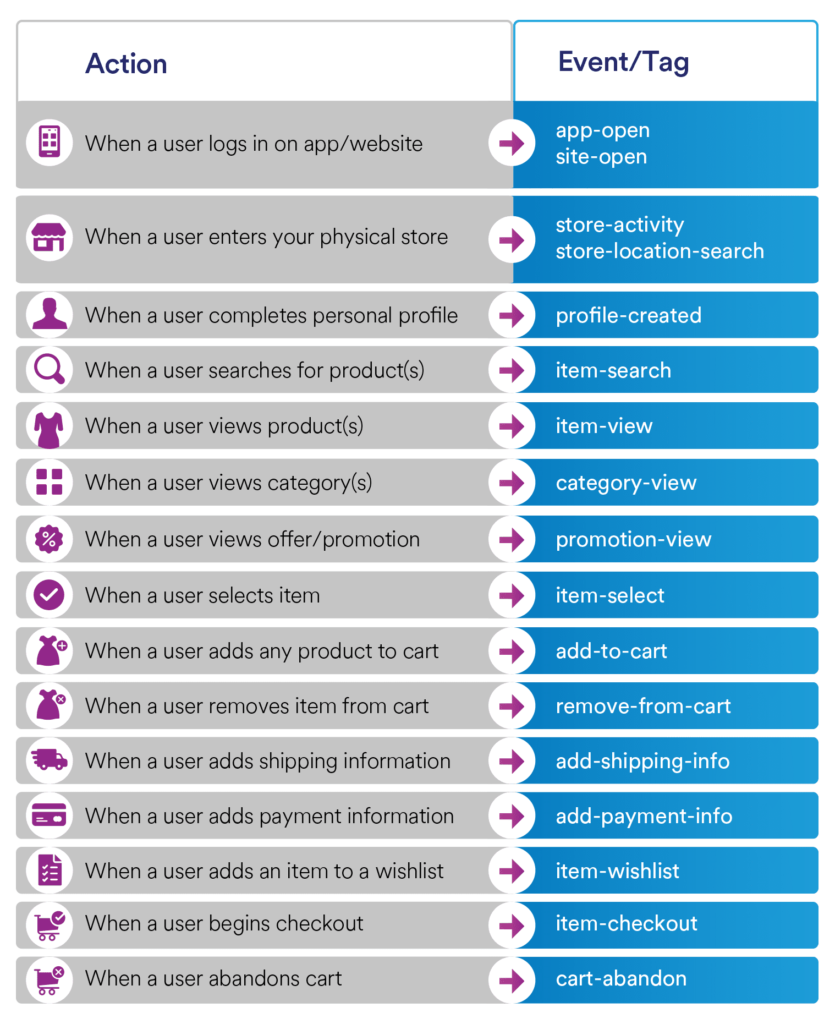
Predictive segmentation can also happen using RFM (Recency, Frequency, and Monetary) modeling. All you have to do add the customer’s transaction history using relevant values and RFM scales using custom filters like last purchase date and value, product category, and more. Next, you need to assign scores for each value and label the segments based on total values.
💡 MoTip:Analyzing behavior across 3-4 channels will help your retail brand understand what actions lead to a purchase. Using these actions activity, you can easily create custom segments and nudge shoppers to purchase products using personalized, relevant messaging. |
Action 2: Omnichannel engagement with relevant, personalized messaging
You have your customers’ segmented and historical data available to understand the preference and purchase pattern. So the automatic next step is to set up engagement workflows to engage customers along the purchase journey. Use your micro-moments to map the exact action-based engagement workflows adding relevant channels across. Connected experience across channel grow micro-conversions. It also increases user activity by sending emails or personalized push notifications when the product is in stock, leading to macro conversion or the actual purchase of a product.
Your customer doesn’t appreciate getting messages that are irrelevant and generic. Using your micro-moment data you can easily personalize communication. Use DPM (dynamic product messaging) to map your product catalog with the behavior and attributes and send personalized recommendations.
💡 MoTip:Focus on is customizing engagement workflows to map the entire customer lifecycle based on user actions. To make these flows logical use the four crucial elements: entry condition, action condition, campaign condition, and control blocks. |
Action 3: Focus on micro-moment conversions
Converting your customers’ small ‘aha’ moments is what matters. These are smaller conversions where you get a customer to follow you on social media, add a product to the cart, add an out-of-stock product to the wishlist etc. Let your customer drop-off during these moments can cost you the final goal i.e., the purchase.
Integrating offline and online channels then using omnichannel engagement will help you bring it all together. You will get the whole picture of your customers’ activities and what moment leads to the purchase. Your omnichannel workflows will provide different variables like frequency, channels, content variations, and more to map the right communication at the right moment.
💡 MoTip:Using automated campaigns with logical flow conditions will help you move customers in the right direction. Execute these campaigns using historical data on micro-moments then use the current event action to revise these workflows. |
Action 4: Boost LTV with loyalty and subscription programs
Lastly, you need to have a loyalty or subscription program to ensure your customers’ stick with your brand. Loyalty program is the go-to strategy for most retail brands, however, many brands are also implementing subscription-based programs.
Don’t limit your program to offline or online stores but keep them flexible across channels. Customers should be able to use their loyalty rewards on any of their preferred channels without any hassle. Create a loyalty strategy based on behavior, preferences, and attributes then drive sign-ups using omnichannel campaigns. Use the active purchases and last purchased frequency metrics to move customers over to the loyalty or subscription threshold. You can also add Facebook and Whatsapp to this mix to send notifications when driving sign-ups.
💡 MoTip:Your loyalty program campaigns can be included in your engagement campaigns using event and action conditions. |
What’s Next
Download our latest eBook that covers the future of retail, retail trends, and ready-to-execute retail strategies. Learn how MoEngage can help execute an omnichannel retail experience.
Find out how MoEngage can help your retail or D2C brand here!













